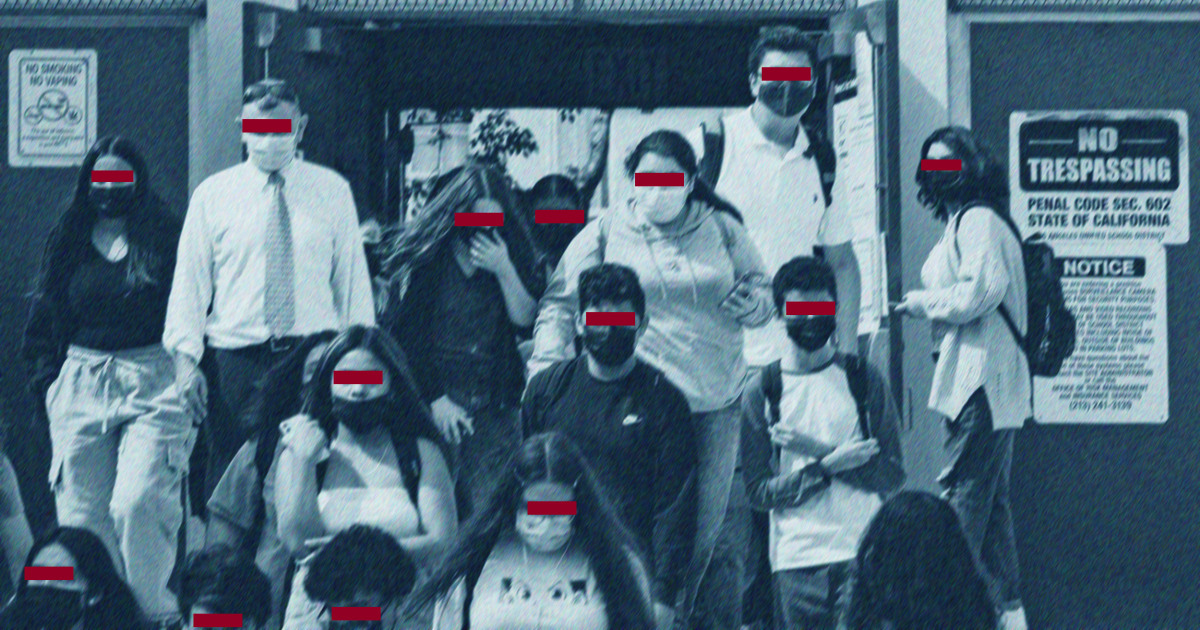
Last spring, the Winston Salem/Forsyth County Schools in North Carolina decided it was time to overhaul their disciplinary policies in light of jarring data which showed that Black students in the district were five times more likely to get suspended than white students.
Under the leadership of both a new superintendent and a deputy superintendent, the massive district which serves 53,000 students, of which 29 percent are Black students, partnered with a Massachusetts based nonprofit group, Engaging Schools, which helps schools develop more equitable practices, to craft more restorative policies.
“A large portion of our strategic plan as we move forward is equity and making sure that we look at things through an equity lens within the district,” Jesse Pratt, the district’s deputy superintendent, said. “When we saw the disproportion of suspensions between our students, we knew that that had to be addressed. We want to do right by these kids.”
The district is in a yearlong process and a final plan won’t be implemented until the next school year, he said. Part of the process is changing a student code of conduct and also giving teachers training on better ways to approach disciplinary issues, he added.
The North Carolina district was part of a wave of institutions that reached out to Engaging Schools over the last year to revise punishment protocols in light of racial equity, the organization said.
With kids readjusting to in-person classrooms, discipline issues are increasing and policies governing them are returning to the forefront, but this time, after the traumas of Covid-19 and a national movement for racial justice, many districts are re-evaluating disciplinary protocols with equity in mind.
Districts across the country, including Dallas and Iowa City, are scrapping punishment policies that disproportionately impact students of color who have historically borne the brunt of suspensions, expulsions and other severe penalties.
In place of the old practices, many are implementing programs and policies that are more restorative, trauma-informed and aimed at less heavy-handed punishments, especially for subjective infractions such as disorderly conduct or insubordination. Under some of these approaches, educators are given more culturally responsive training, more classroom management skills to manage misbehavior, and will limit the use of suspensions, especially for younger students.
“From the very moment that you saw integration of school systems, you began to see an unfair distribution of school suspensions being placed on, particularly at that time, Black kids, and now Latinx kids,” said Howard Henderson, the founding director of the Center for Justice Research at Texas Southern University.
A 2020 study by the Center for Civil Rights Remedies at the UCLA Civil Rights Project and the Learning Policy Institute, that analyzed federal data from the 2015-16 school year found that Black students lost five times as many instructional days from suspensions than white students.
This overuse of harsh disciplinary measures has created a host of negative impacts on these kids, he said. “You begin to see these students don’t do as well academically, they don’t do as well in civic engagement. They’re not as engaged in society. From an educational level, they just don’t achieve like everyone else who’s not suspended,” he said. “They’re more likely to end up in juvenile detention, which means they’re also more likely to end up in the adult prison system at a later point in life.”
The school-to-prison pipeline, which funnels students — largely of color — into the criminal justice system has been well documented through robust research. According to a working paper published in 2019 by the National Bureau of Economic Research, students assigned to schools with high suspension rates are up to 20 percent more likely to be arrested and incarcerated later and are also less likely to attend a four-year college.
A 2021 study published in the journal American Psychologist found that “among Black students, those who were suspended for a minor infraction during the first year of the study had significantly lower grades both one and two years later than students who weren’t suspended.”
The Obama administration attempted to tackle racial disparities in school punishments by issuing federal guidelines on classroom discipline, but the measures were later rescinded by then-President Donald Trump, who said the guidance was overbearing.
But Henderson feels that the combination of Covid and the movement sparked by the murder of George Floyd has sparked awareness and heightened momentum around the issue again, especially among educators and administrators.
“Going through a pandemic and having to recognize how you teach school and students in the online format, you recognize how much racial disparities exist,” he said. “This is definitely on their mind.”
Richard Welsh, an associate professor of educational leadership and policy studies at New York University, is partnering with districts to help them reduce racial inequality in school discipline.
He said behavior issues and fighting in schools have increased with the return to in-person schooling. Many kids are needing to relearn how to behave in classrooms, so school discipline is very much on the radar of district and school administrators right now, he said.
“What schools are going to realize is that many of the school discipline reforms that have seen positive benefits are very applicable to the school environment that we have now in 2021-22 with the pandemic socialization of students returning to classrooms,” he said. “I do think you’re going to have a lot more districts that can sell school discipline reforms, not only to reduce suspensions, but to improve the overall school climate and to ensure that we can actually improve academic outcomes as well.”
An important thing to note, Welsh said, is that while certain interventions like changing codes of conduct have shown to reduce the suspension rates, there is still little evidence that they will also reduce racial disparities. For that, teacher classroom management and enhancing the cultural responsibility of educators are better solutions, he said.
There is also a challenge in implementing these programs, getting the buy-in, and replacing an established punitive mindset in schools, he said.
“There’s a dissonance because what you’re really uprooting is a punitive mindset where educators leaned on suspensions as the primary way to manage behavior. So you still have these two mindsets existing in the same district, this tension of sorts where there’s an appreciation and demand for alternatives such as restorative justice, but administrators still may feel they are using suspensions appropriately.”
Another more emerging challenge to bridge the racial gaps is the all consuming anti-critical race theory movement, which resists any racial lens in schools, said Kaitlin Anderson, a professor at Lehigh University who focuses on issues of equity and opportunity in educational organizations.
“I think that’s important to keep in mind is that regardless of what some schools are starting to do, there’s also state legislatures that are actively trying to keep schools from doing that in certain states,” she said. “Some have made it so difficult to mention race at all in certain types of context that it’s very difficult to really address the systemic issues, which when it comes to student discipline often center on race, as well as disability status, so that push at the state level is really going to hamper some of those efforts.”
Despite that, Anderson said she has seen many schools that are or at least starting to make strides toward equity in the form of audits and plans. She said she has also seen a significant bump in interest by schools to utilize more trauma-informed approaches post Covid and Floyd’s death.
“There is a growing awareness, not only with conversations around anti-racism, but also just the fact that we need to reintegrate kids in a more supportive environment, and that punishing them for acting out in class is not going to be productive.”
Source: | This article originally belongs to Nbcnews.com










